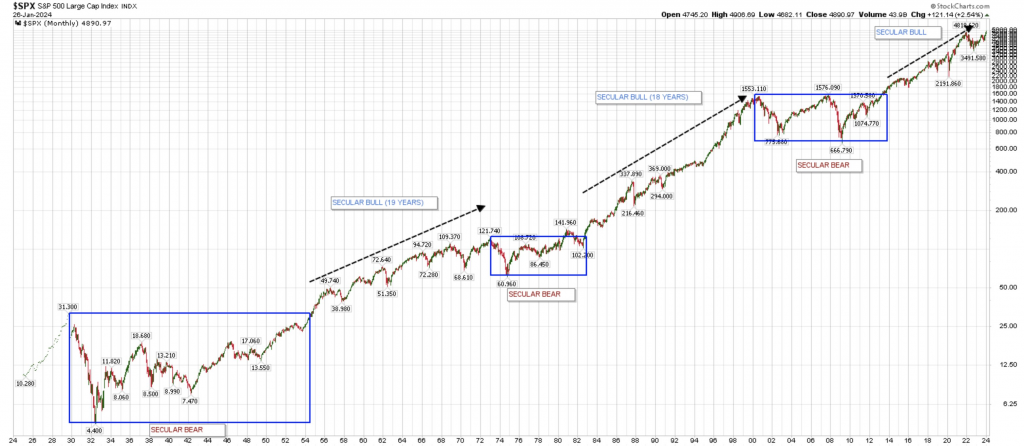Data analysis is an essential tool for market analysts and fund managers. It provides valuable insights into market trends and historical patterns. One such intriguing analysis was shared by Puru Saxena, a popular Twitter account specialising in the US markets. Saxena presented a historical perspective, highlighting periods of prolonged stagnation in the S&P 500 index. The analysis sheds light on the significance of preparing for a long bear market, an experience that many younger professionals in the industry have yet to encounter.
A bear market is typically characterised by a sustained decline in market prices, often accompanied by a pessimistic economic outlook. In Saxena’s analysis, he focuses on three noteworthy periods: 1929-1954, 1972-1983, and 2000-2013. These periods highlight the potential for extended periods without significant market progress.

The first instance, from 1929 to 1954, lasted a staggering 25 years before the index recovered to reach new highs. This prolonged period of stagnation was a result of the Great Depression, during which the market experienced a 90% decline. The second period, from 1972 to 1983, endured an 11-year stretch with minimal market growth. Finally, the third example, from 2000 to 2013, spanned 13 years with no appreciable gains on the index, including a substantial 50% decline.
These historical examples serve as a crucial reminder to market participants, particularly those under the age of 39, who have not witnessed a long bear market in their professional careers. The absence of such an event in recent times may create complacency and a false sense of security. With a considerable number of young analysts and fund managers active in the market, it is vital for them to recognize the potential impact of a long bear market and be prepared to navigate its challenges.
One of the key takeaways from Saxena’s analysis is the importance of asset allocation. During these periods of stagnation, gold performed remarkably well, serving as a reliable asset outside of equities. Considering alternative assets like real estate can also be a prudent strategy during a long bear market. Diversifying one’s portfolio across different asset classes minimises risk and provides stability when equities are facing prolonged declines.
Another crucial aspect to consider is the adoption of definitive strategies to navigate significant declines in the market. A decline of 50%, 60%, or even 70% on the index can be devastating for investors who do not have a sound strategy in place. Implementing a momentum investing strategy can help identify sectors or stocks that continue to perform well during bearish periods, while avoiding those that suffer significant losses. Maintaining discipline and adhering to the chosen strategy is key to achieving success in this approach.
One of the advantages of momentum investing is that it allows investors to conserve their capital during periods when the market is not trending. By avoiding significant losses, investors position themselves for high returns when the market eventually recovers. The focus is on capital preservation in order to capitalise on future opportunities, rather than taking unnecessary risks during times of uncertainty.

If you have any questions, please write to support@weekendinvesting.com









